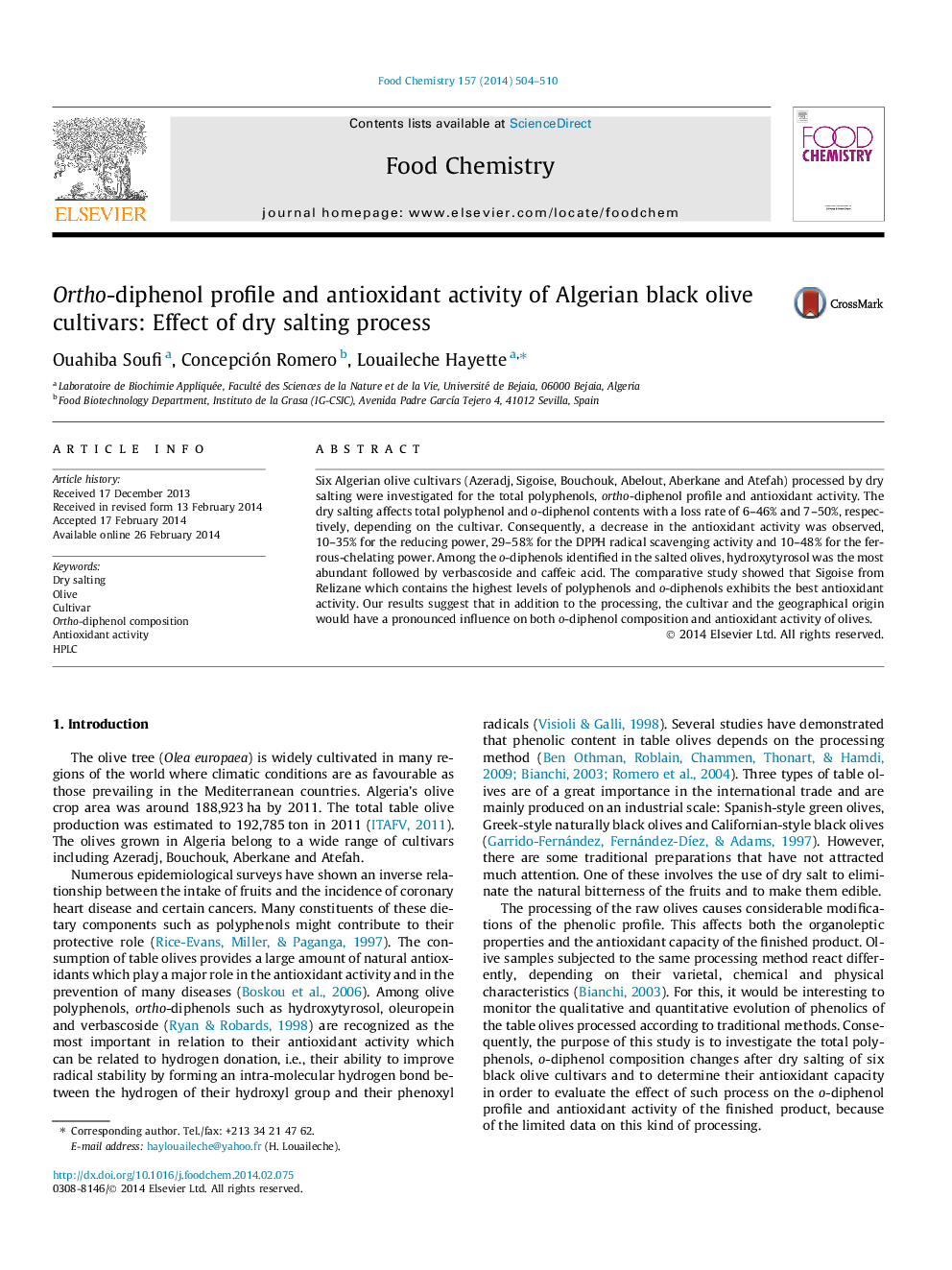| Article ID | Journal | Published Year | Pages | File Type |
|---|---|---|---|---|
| 1184599 | Food Chemistry | 2014 | 7 Pages |
•O-diphenol profile of Algerian black olive cultivars was investigated.•O-diphenol profile was influenced by the cultivar and geographical origin.•The salting affects the total phenolics, o-diphenols and antioxidant activity.•The loss of bioactive compounds after salting was related to the cultivar.•Despite of the salting, some cultivars exhibit a considerable antioxidant activity.
Six Algerian olive cultivars (Azeradj, Sigoise, Bouchouk, Abelout, Aberkane and Atefah) processed by dry salting were investigated for the total polyphenols, ortho-diphenol profile and antioxidant activity. The dry salting affects total polyphenol and o-diphenol contents with a loss rate of 6–46% and 7–50%, respectively, depending on the cultivar. Consequently, a decrease in the antioxidant activity was observed, 10–35% for the reducing power, 29–58% for the DPPH radical scavenging activity and 10–48% for the ferrous-chelating power. Among the o-diphenols identified in the salted olives, hydroxytyrosol was the most abundant followed by verbascoside and caffeic acid. The comparative study showed that Sigoise from Relizane which contains the highest levels of polyphenols and o-diphenols exhibits the best antioxidant activity. Our results suggest that in addition to the processing, the cultivar and the geographical origin would have a pronounced influence on both o-diphenol composition and antioxidant activity of olives.
